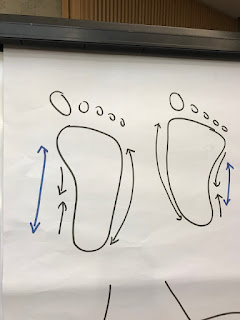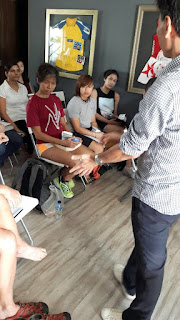 |
| Raining cats and dogs |
Later while treating patients overseas (where it can get much colder than Singapore), the patients there tell me the same thing. They say right before the weather turns cold, their previously injured or arthritic bones/ joints will hurt.
So is that true or just an old wives' tale? Can the ache in your bones and joints predict the change in weather?
 |
| Raining all the time here at Sports Solutions the past week |
The researchers matched the dates of the visits to local weather reports and found that 2,095,761 of the cases occurred on rainy days. After controls applied for age, sex, race, various chronic medical conditions including rheumatic arthritis, they found more visits for bone and joint pain during dry days than wet days.
The authors concluded that the weather does not cause joint pain but that patients attribute joint pain to the weather when it's raining.
I can hear those of you reading this protesting already. Yes, I personally agree there are flaws in the way this study is conducted. In the real world, many patients complain that they can't get a same day appointment with the doctor when they feel pain in their joints. Even if they did get a same day appointment, the doctor will tell them it's the "weather causing their pain".
Personally I don't get any pain in my back or skull (fortunately) after my accident, before the weather changes or in cold weather.
BUT, I've definitely noticed that if I'm coming down with a fever and especially if my stomach is feeling uncomfortable either from indigestion or feeling bloated, my previously fractured L1 lumbar spine will definitely ache. Visceral manipulation (mobilization of the organs) helps that. This is covered in another post.
Reference
Jena AB, Olenski AR et al (2017). Association Between Rainfall And Diagnoses Of Joint Or Back Pain: Retrospective Claims Analysis. BMJ. 359:j5326. DOI: 10.1136/bmj.j5326.

















































